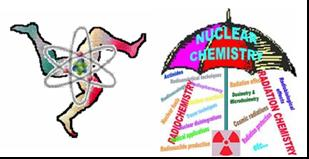Speaker
Ms
Kelly Nunes
(Instituto de Pesquisas Energéticas e Nucleares)
Description
The Marajo Island is the largest island of the Marajo archipelago, located in the North of Brazil. With an area of approximately 50,000 km2, it is located in the Para State and east part of the Amazon. In this region, at the end of 19th century, it was identified an archaeological society named Marajora, which occupied the island from 400 to 1400 AD. It was characterized by the development of an intensive subsistence system based on fish farming and by a ceramic style recognized by its beauty and exuberance. Until this moment, the physical and chemical analysis studies in this ceramics are scarce and this kind of studies may help to archaeological studies made in the island. With this purpose, this work presents a preliminary study of the firing temperature in the ceramics. For that, the elementary concentrations of 100 samples from Museu de Arqueologia e Etnologia of São Paulo University and samples collected in the Marajo Island were studied. The samples were analyzed using instrumental neutron activation analysis in which the elemental concentration of Ce, Co, Cr, Cs, Eu, Fe, Hf, K, La, Lu, Na, Nd, Rb, Sc, Sm, Ta, Tb, Th, U, Yb and Zn were determined. The interpretation of the results was made using principal components analysis and showed the existence of three chemical groups. Some samples of each cluster were chosen for the determination of their firing temperatures by electron paramagnetic resonance, in order to verify if different firing temperatures was associated with different elemental groups of ceramic samples. The results showed no statistical differences in the firing temperature between the samples from Museu de Arqueologia e Etnologia and the samples collected in the Marajo Island.
Primary author
Ms
Kelly Nunes
(Instituto de Pesquisas Energéticas e Nucleares)
Co-authors
Mr
Carlos Brunello
(Universidade de São Paulo)
Dr
Casimiro Munita
(Instituto de Pesquisas Energéticas e Nucleares)
Dr
Célia Demartini
(Museu de Arqueologia e Etnologia)
Dr
Denise Schaan
(Universidade Federal do Pará)
Dr
Eduardo Neves
(Museu de Arqueologia e Etnologia)
Dr
Luiz Carlos Oliveira
(Universidade de São Paulo)
Dr
Oswaldo Baffa
(Universidade de São Paulo)
Dr
Paulo Oliveira
(Instituto de Pesquisas Energéticas e Nucleares)
Ms
Rosimeiri Toyota
(Instituto de Pesquisas Energéticas e Nucleares)




